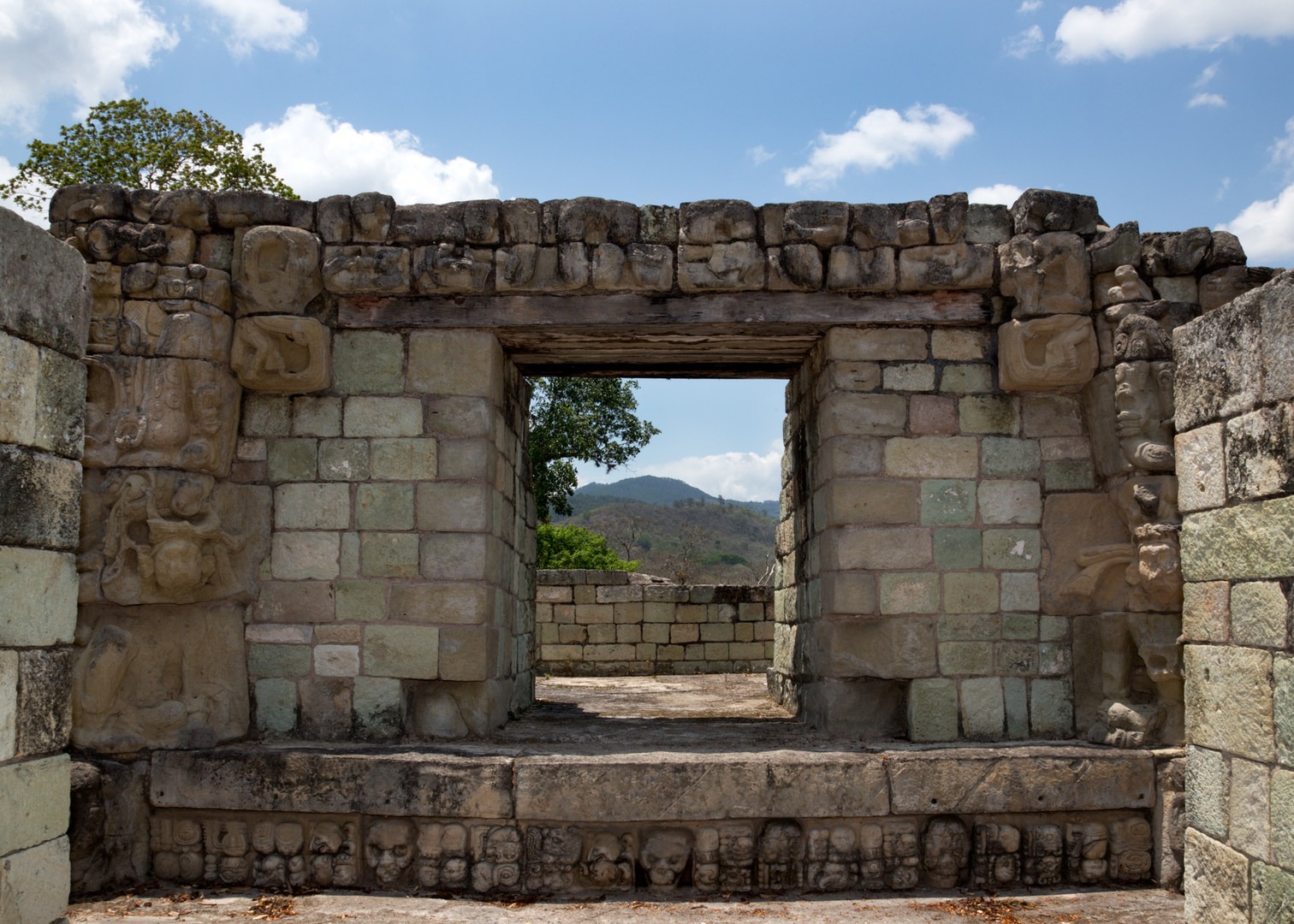You are here
Near the border of Guatemala in Honduras, the Copán Ruinas Archeological Park showcases nearly 2,000 years of Mayan archeology. With intricate stone carvings, staircases, ancient masonry, and even a ball court, the site is a UNESCO World Heritage site that enshrines one of the Americas' most advanced pre-Columbian civilizations.
You might be surprised when you arrive at Copán Ruinas Archeological Park and see a guard carrying a rifle wandering among the cars in the parking lot. Security is frequently seen in Honduras. While it’s important to be cautious, you’re most likely to be swarmed by young, adorable children peddling their handmade dolls and strange-looking carved figurines. When you enter this extraordinary park, you’ll soon be mesmerized by the larger-than-life version of those figurines.
You can’t miss the immense three-dimensional model of the ancient city of Copán featured in the visitor center, but there’s no display that can truly prepare you for the amazing sights you are about to see. As brightly colored macaws fly overhead with loud squawks, a tour guide leads you back into history as you walk on the road to Copán. He points to mounds of rocks overgrown with plants and trees. What’s in these mounds? No one knows, yet. They’re waiting for future archeologists. You continue walking on ground where the ancient Maya trod as the tour guide points out exotic plants and begins to tell the intriguing story of this once great city.
The first of 16 rulers, the Maya leader K’inich Yax K’uk’ Mo’ started a dynasty beginning in A.D. 427 that transformed Copán. During the Classic Maya Period, A.D. 300 to 900, Copán became one of the greatest Mayan cities and the most adorned with elaborate stone carvings. The city is divided into two areas: the Grand Plaza, a huge public space, and the Acropolis, an area of decorated temples, staircases, and courts, reserved for the ruling elite. The city has a renowned hieroglyphic stairway that contains the longest single hieroglyphic inscription of the ancient New World. Partly because of the remarkable stairway, UNESCO, declared Copán a World Heritage Site in 1980.
The city also features a ball court where players used a heavy, solid rubber ball. The stakes were high. Some Maya art shows a bloody sacrifice of the losers. However, some Spanish historians who witnessed the game in other regions recorded that the losers, and their fans, had only to give up their fine clothing and jewelry.
You wander among the gigantic buildings, climb the ancient stairs, and marvel at the intricate stone carvings. As you gaze at enormous monolithic stone statues, you’ll learn that those strange carved figurines the children showed you are representations of these ornate stelae of the rulers of Copán. Look closely at the original stone carvings. How did the artists, using the rudimentary tools of the time, create these carved masterpieces?
The park is open daily from 8 a.m. to 6 p.m. It is located 1.5 kilometers from the town of Copán Ruinas. Admission is $15.00 for foreign visitors, $8.00 for Central American visitors. Separate fees apply for the sculpture museum and archeological tunnels. Honduran visitors receive special pricing. Please note: only drink bottled water in Honduras. It is considered unsafe to be outside or travel at night in most of Honduras. Never travel alone.
Logistics + Planning
Current Weather: Powered by Dark Sky






























Comments
Sign In and share them.